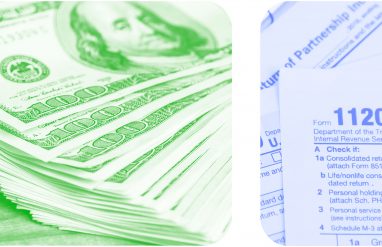Which amendment gives us freedom of speech?
Congress shall make no law respecting an establishment of religion, or prohibiting the free exercise thereof; or abridging the freedom of speech, or of the press; or the right of the people peaceably to assemble, and to petition the government for a redress of grievances.
—First Amendment to the Constitution
We Americans love to refer to the First Amendment and our right to “free speech.” At a basic level, the First Amendment states that the federal government cannot restrain our free speech.
However, as with most things in life, there is abundant room for interpretation of this amendment, and as time marches on, its protections are constantly in transition. Read on for examples of the cases that have shaped our understanding of free speech.
What limitations are there on free speech?
There have been countless court cases since the First Amendment was passed in 1791, all carried out in an effort to allow the essence of free speech to prevail, while carving out reasonable protections as well. The basic exceptions to free speech include:
- speech that threatens someone with violence
- speech that incites listeners to take illegal action
- speech that is harmful in certain other ways (see more below)
One famous court case determined that certain types of speech “create a clear and present danger that they will bring about the substantive evils that Congress has a right to prevent.” In Schenck v. United States (1918), Supreme Court Justice Oliver Wendell Holmes declared that you cannot yell, “Fire!” in a crowded place where there is no fire. The phrase has become famous when used in discussion of free speech.
But, the court case wasn’t actually about anyone yelling, “Fire!” It was about an organized effort to stop young men from answering the draft call in World War I. The federal government claimed that Charles T. Schenck (general secretary of the US Socialist Party at the time) violated the Espionage Act of 1917 by distributing leaflets encouraging young men from resisting military service.
Schenck and his cohorts were convicted, but they appealed to the Supreme Court claiming that the criminal conviction ran contrary to their First Amendment rights to free speech. The appeal failed. The Supreme Court unanimously found “a clear and present danger” (like yelling “Fire!” in a crowded room) in the actions of the war resistors.
Even as late as the 1960s (when burning draft cards was a federal offense), the court continued to confirm that the First Amendment did not protect the right to interfere with conscription.
Other categories that are deemed harmful (and not generally protected by the First Amendment) include obscenity, perjury, blackmail, defamation, and “true threats.”
Then, what is free speech?
Let’s take a look at some court rulings to learn more about the interpretation of the First Amendment:
- A court case in 1943 established the right not to speak—that is, the right to not salute a flag—and another case defended the right of teachers and students to forego the “Pledge of Allegiance.”
- The court has protected the burning of the flag as “symbolic speech.”
- The court established First Amendment protections for Ku Klux Klan rally speeches and cross-burnings (though states could ban the latter), and for other “symbols that arouse anger, alarm, or resentment in others on the basis of race, color, creed, religion or gender.” The argument is that, lacking a clear encouragement of violence, those things do not present an “incitement to imminent lawless action.” (We’ll get to “hate speech” in a moment.)
- It protected the emergent internet from the 1996 Communications Decency Act, which was ruled unconstitutional since it was “vague and overly broad” in its attempt to regulate indecent speech online.
What about defamation?
With social media in particular presenting an immediate and technically intractable opportunity for both defamation and threats, free speech has expanded to protect more and more slander than ever before. Defamation is the act of causing “false or unjustified injury of the good reputation of another, as by slander or libel; calumny.” Slander is a defamatory statement that is spoken, while libel is written or published.
When a conservative lawmaker shouted, “You lie!” during one of President Obama’s speeches, the nation largely recoiled. Was the unprecedented outburst slander? Or, was the name-caller merely expressing his right to free speech? As appalling as the behavior was deemed to be by most Americans, that incident was chalked up to poor behavior (the lawmaker later apologized).
If the president had wanted to make a case out of it, some legal experts think proving slander would have been immensely difficult, and that the protection of the legislator’s right to free speech may have won the day. Decorum and civility clearly lost, and that episode likely paved the way for the climate of name-calling we see today in our nation’s capital.
What is hate speech?
As much as you may not like to hear it, hate speech is protected by the First Amendment. It’s generally defined as “speech, writing, or nonverbal communication that attacks, threatens, or insults a person or group on the basis of national origin, ethnicity, color, religion, gender, gender identity, sexual orientation, or disability.” As sentiments of anti-immigration and white supremacy are seemingly on the rise, the ideals of the free-speech movement appear to be topsy-turvy.
In the 1960s, the movement emanated from the UC Berkeley campus, and across the country students insisted on being heard. Now, college campuses have become a place where free speech is questioned, and some say suppressed as ultra-conservative and controversial speakers have not been welcomed as of late. Today’s college students grew up in a culture in which bullying and hate is wrong, and their idea of a safe place on a college campus is one where discriminatory or hateful language should not be tolerated.
This is an interesting and ongoing debate on and around college campuses. Campus groups can opt to not invite controversial speakers, but if they do, the Supreme Court would defend the speakers’ right to appear nonetheless.
Should students welcome all voices and ideas and learn to distinguish what is valid and what is disposable by experiencing that diversity? Or, should ideology that is widely interpreted as discriminatory or hateful be expunged from the college experience? Is there any value in “hate speech”? Or is it free speech, gone over the line?
With so much heated discussion raging around us these days, it pays to know the difference between such terms as libel vs. slander.














